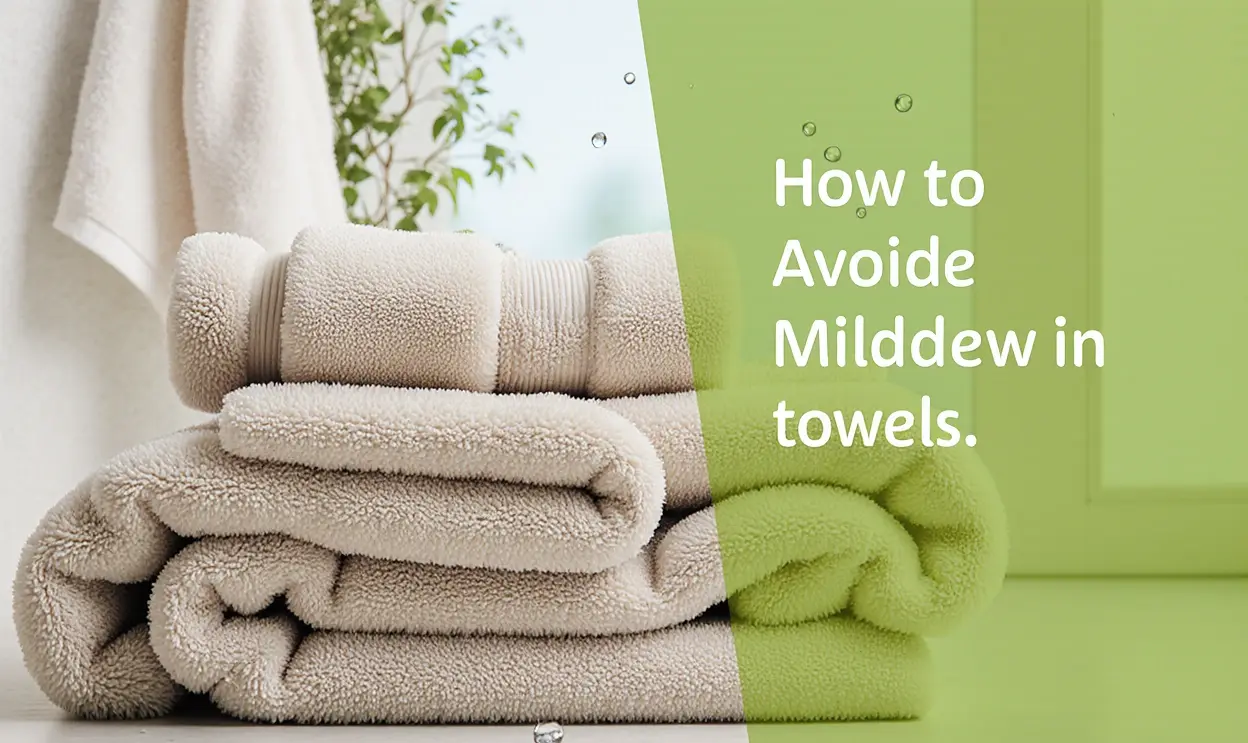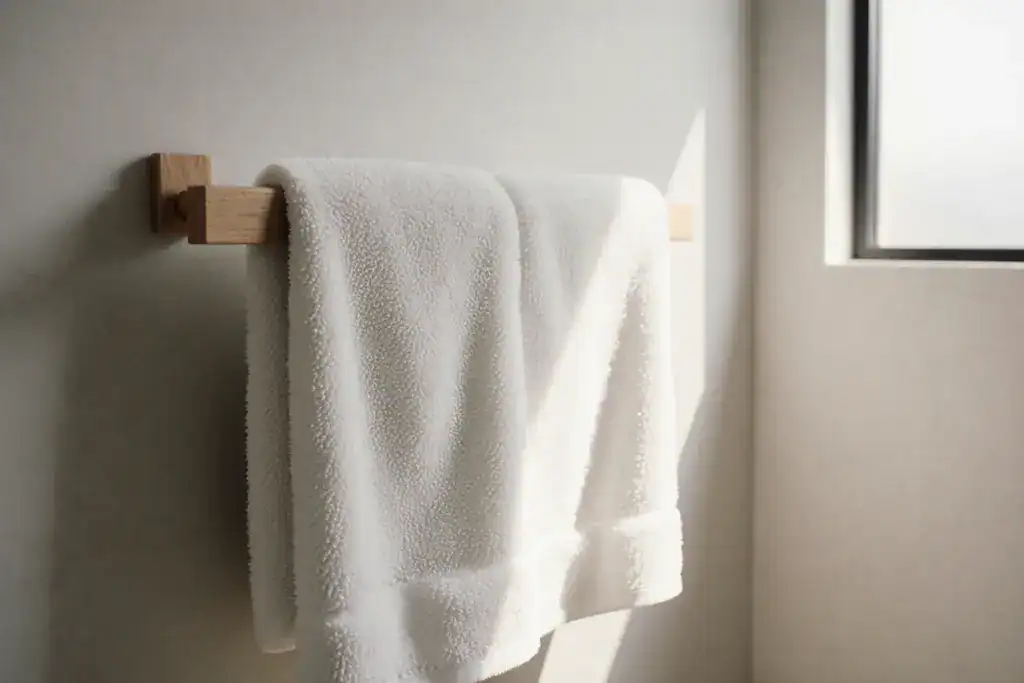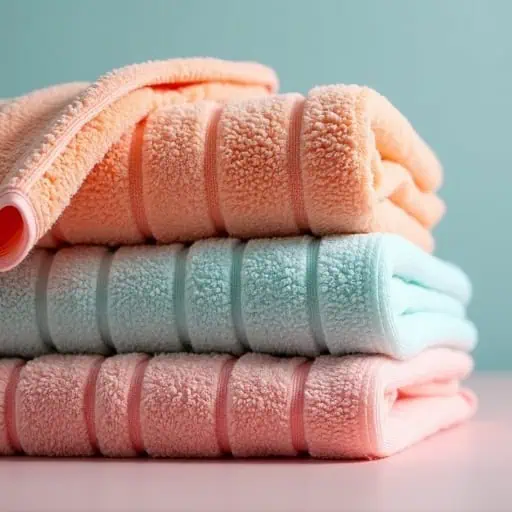Keeping bath towels fresh shouldn’t feel like a mystery. Yet many households battle that stubborn musty towel smell after only a few uses. Here’s the good news: with the right habits and wash routine, anyone can keep towels hygienic, soft, and smelling clean.
This comprehensive guide explains exactly how to avoid mildew in towels, why it forms in the first place, and what to do if it’s already taken hold—using expert-backed techniques like proper drying, smart storage, and targeted washing methods that actually work.
Whether outfitting a busy family home, a small apartment, or a vacation rental, the strategies below are practical, efficient, and designed for real life—with checklists, a quick-reference table, pro tips, and FAQs to cover tricky situations like high humidity, hard water, and frequent gym use.
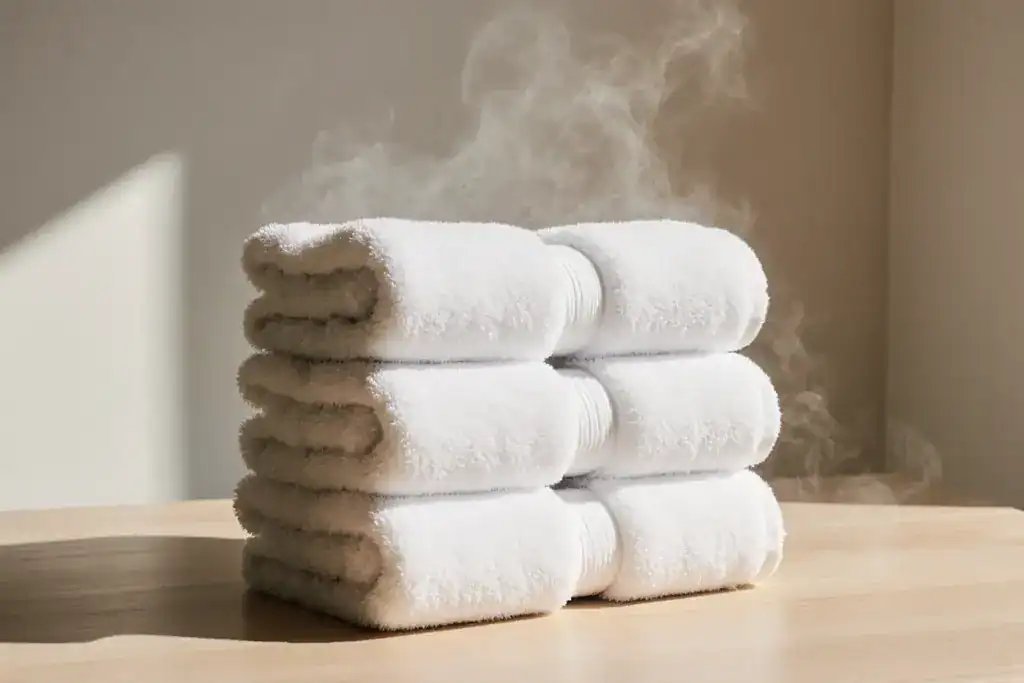
Introduction: Why Towels Develop Mildew—and Why Prevention Matters
Towels are highly absorbent, which makes them perfect for drying skin—but also great at holding water deep in their fibers. That lingering moisture creates an ideal breeding ground for bacteria and mildew if towels aren’t dried quickly and washed regularly.
Bathrooms with poor ventilation, towels left bunched on hooks, and skipped laundry days all contribute to the musty smell and even potential skin irritation.
Preventing mildew offers multiple benefits:
- Keeps towels fresh and odor-free
- Prevents skin breakouts or irritation
- Extends towel life by avoiding fiber damage
- Improves hygiene for the whole household
If the goal is soft, clean-smelling, long-lasting towels, the formula is simple: dry thoroughly after each use, wash on the right schedule, avoid excess detergent or softener, and store only when completely dry.
Key Takeaways (Quick Wins)
- Hang fully open in a ventilated space after each use—bonus points for sunlight exposure.
- Wash after 3–4 uses (or more often in humid environments or after workouts).
- Skip fabric softener—it traps odors and reduces absorbency. Use vinegar or baking soda for freshness.
- Wash hot (60°C/140°F) when care labels allow for better microbe control.
- Ensure full dryness before folding and storing.
- Clean your washer regularly to prevent odor transfer.
Why Towels Develop Mildew
1. Absorbent Fibers + Moisture Retention
Terry cloth loops are designed for maximum absorption—but with poor airflow, moisture stays trapped, giving fungus and bacteria the warm, damp environment they love.
2. Common Triggers for Musty Smells
- Leaving towels balled up in hampers or on the floor.
- Hanging wet towels in bathrooms with weak ventilation.
- Not washing often enough.
- Using too much detergent or fabric softener (leading to residue).
- Mineral buildup from hard water.
Research Note: Towels dried in direct sunlight show significantly fewer bacteria than those dried in damp indoor spaces. UV light and airflow are powerful tools against mildew.
Best Practices to Prevent Mildew
Proper Drying Techniques
- Air-dry with space: Spread towels fully open on a bar or rack; avoid folding over themselves.
- Ventilate: Use exhaust fans or open windows after showers. If possible, dry outdoors in sunlight.
- Avoid damp piles: Never throw wet towels in the hamper—either hang to dry fully or wash immediately.
- Dryer use: Run the full cycle—don’t store half-damp towels.
Storage Tips
- Store towels only when completely dry.
- Use open shelving or breathable baskets—avoid compressed stacks.
- Provide enough hooks or rods so each towel hangs without overlap.
- Rotate towels weekly so no one towel stays damp longer than others.
Washing Habits That Work
- Wash after 3–4 uses or sooner if sweaty, damp, or soiled.
- Hot or warm water when the fabric allows—60°C/140°F kills most odor-causing microbes.
- Use the correct amount of detergent—too much leaves residue.
- Skip fabric softener—it reduces absorbency; replace with vinegar cycles.
- Occasional refresh: Vinegar (1 cup, no detergent) followed by a baking soda wash (1/2 cup).
Avoiding Common Mistakes
- Don’t leave washed towels sitting wet inside the machine.
- Don’t overload the dryer—crowded loads won’t dry evenly.
- Don’t store “almost dry” towels—ensure every fiber is moisture-free.
Step-by-Step Mildew Prevention Routine
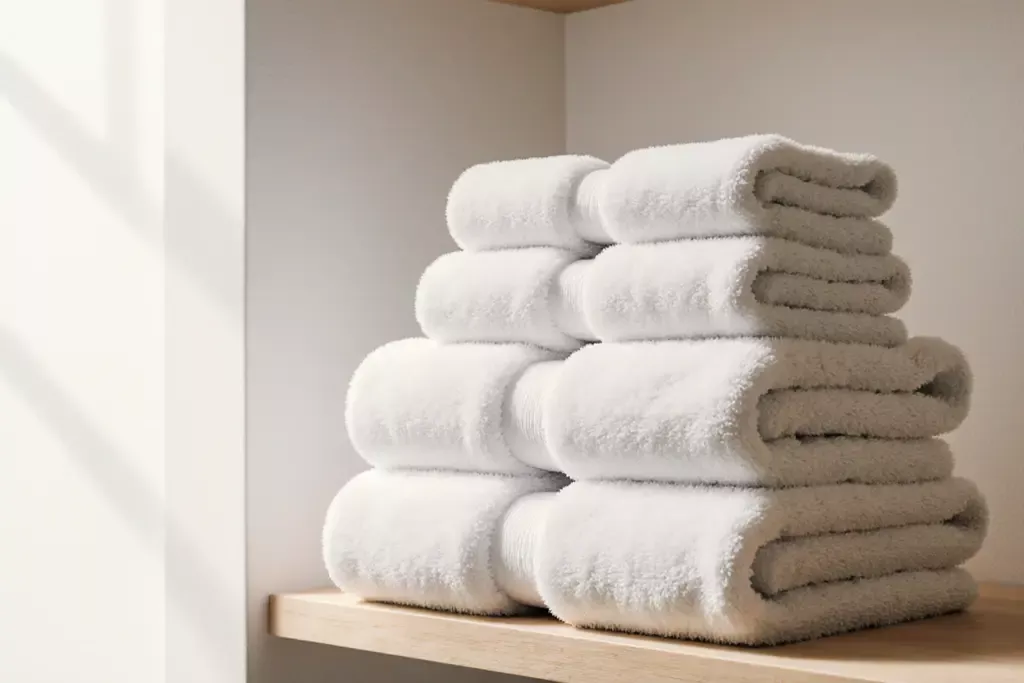
Daily Habits
- After use, shake out the towel and hang fully open.
- Run the bathroom fan or open a window for airflow.
- Rotate towels if one still feels damp before reuse.
Weekly Routine
- Wash towels after their 3rd or 4th use.
- Use the correct detergent dose and no fabric softener.
- Add a vinegar + baking soda refresh if towels smell stale.
- Clean washing machine seals to prevent odor transfer.
Seasonal Deep Cleaning
- In humid months, wash every 2–3 uses.
- Use outdoor sun-drying where possible.
- For hard water, add vinegar occasionally to prevent mineral buildup.
Quick Reference Table
| Step | Action | Benefit |
|---|---|---|
| After each use | Hang fully open in ventilated area | Faster drying, less bacteria |
| Every 3–4 uses | Wash hot or warm, skip softener | Removes buildup, kills microbes |
| As needed | Vinegar + baking soda wash | Deodorizes, restores absorbency |
| Before storage | Ensure completely dry | Prevents closet mustiness |
| Monthly | Clean washer drum & seals | Avoids odor contamination |
Dealing with Towels That Already Have Mildew
- Vinegar cycle: Hot wash with 1 cup white vinegar (no detergent).
- Baking soda cycle: Second wash with 1/2 cup baking soda.
- Sun dry when possible.
- Repeat if necessary—persistent odors mean deeper buildup.
- If smell/stains persist after multiple treatments, retire the towel to cleaning duty.
Pro Tips & Expert Tricks
- Sunlight disinfects naturally—great for seasonal refreshes.
- White vinegar > Fabric softener for freshness without residue.
- Small loads clean better—3–4 large towels per cycle max.
- In hard water areas, vinegar prevents stiff, odor-holding fibers.
- After illness, wash on hot and sun dry if possible for extra sanitization.
Real-Life Examples
- The Gym Bag Problem: Sweaty towels left in closed gym bags smell musty within hours. The fix: air-dry immediately or bag separately in a breathable pouch until washing.
- Bathroom Drying Fail: One renter found towels stayed musty in a windowless bathroom. Solution: Move towels to a sunny window and run the exhaust fan—smell gone within days.
- Fabric Softener Trap: A family’s towels lost absorbency and always smelled stale. After switching to vinegar rinses and correct detergent dosing, towels regained fluff and freshness.
FAQs
How often should I wash towels to prevent mildew?
Usually after 3–4 uses, or immediately after sweating heavily or swimming.
Can mildew survive in a dryer?
Yes—drying won’t always kill mildew spores. Wash thoroughly with heat and vinegar before drying.
What if my towel smells musty right after washing?
Clean the washing machine, avoid overloading, and run a vinegar+baking soda refresh for the towels.
Is sunlight really that good for towels?
Yes—UV light naturally disinfects and reduces bacterial growth.
Is fabric softener bad for towels?
Yes—it coats fibers, reduces absorbency, and traps odor.
WordPress-Ready Sidebar Quick Guide
Daily: Hang open, ventilate, rotate.
Every 3–4 uses: Wash hot/warm, skip softener.
As needed: Vinegar + baking soda refresh.
Monthly: Clean washer and seals.
Seasonal: Increase frequency in humid months; sun dry if possible.
Conclusion
Mastering how to avoid mildew in towels boils down to three essentials:
- Moisture control – quick and complete drying.
- Residue control – correct detergent use and skipping softener.
- Heat & freshness – warm/hot washes, sun exposure, and vinegar refreshes.
Build these steps into your routine, and you’ll enjoy fresh, soft, and hygienic towels year-round—no more embarrassing musty smells.

